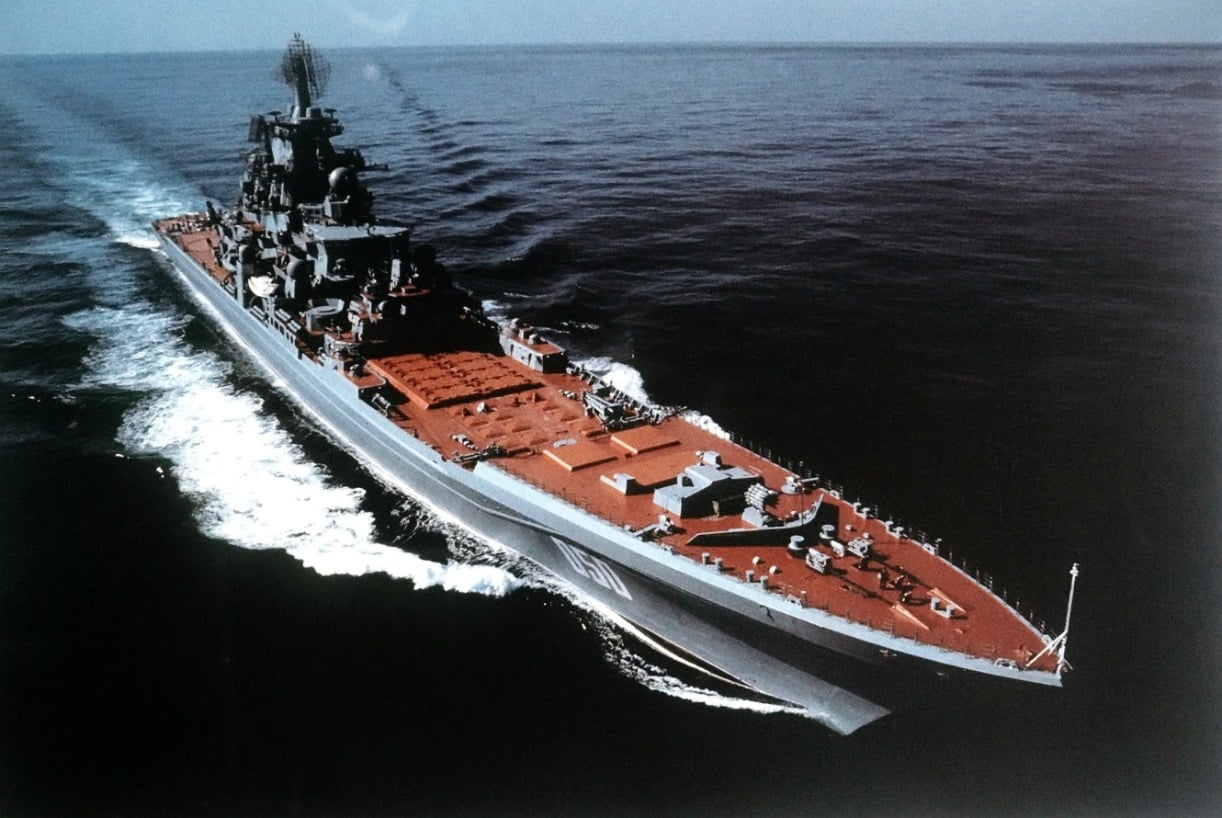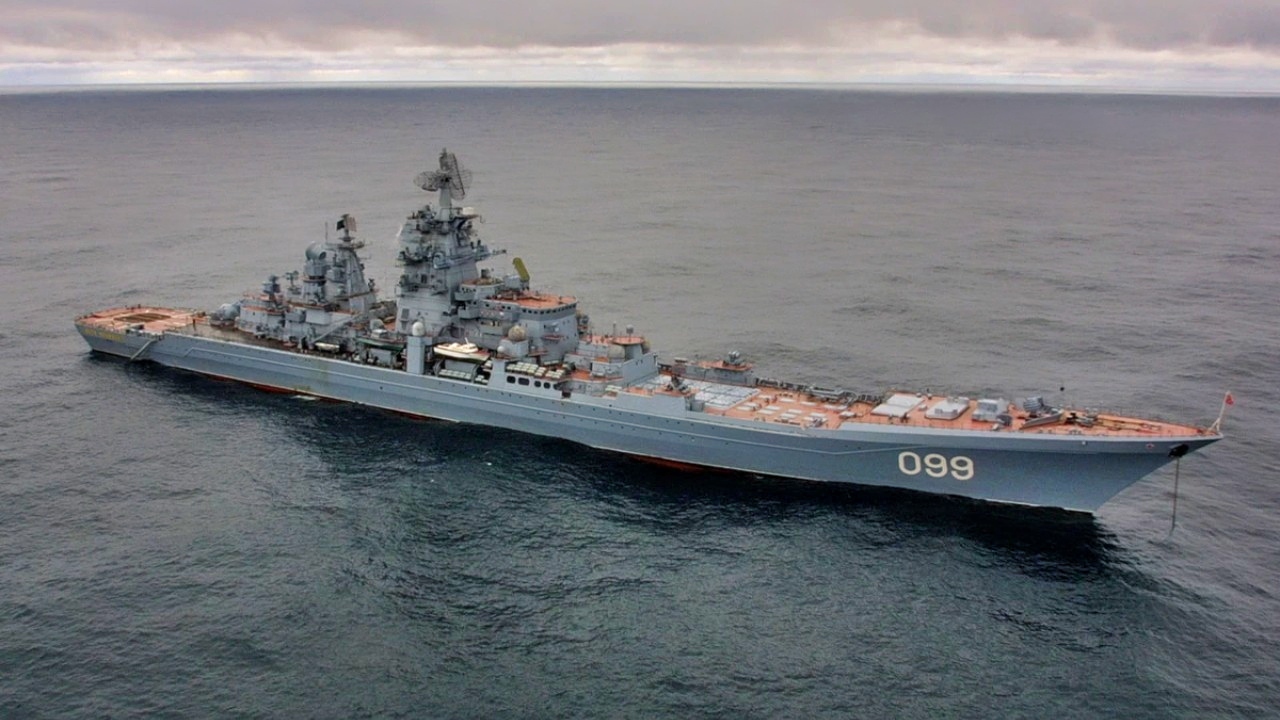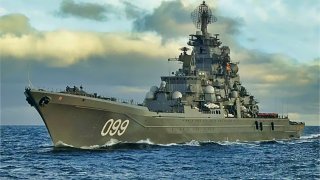Russia's Nuclear Kirov-Class Battlecruisers Can Be Explained in 2 Words
The Kirov-class battlecruisers, once envisioned as the crown jewels of Russian naval might, face obsolescence in today’s A2/AD and hypersonic weapon era.
Nuclear Mistake: The Kirov-class battlecruisers, once envisioned as the crown jewels of Russian naval might, face obsolescence in today’s A2/AD and hypersonic weapon era.

-Although imposing with heavy armament and nuclear power, their vulnerabilities were underscored by the Ukrainian sinking of the Russian Moskva, hinting at how easily these costly vessels could be compromised. Similar to U.S. overinvestment in aircraft carriers, Russia’s commitment to modernizing the Kirov-class seems misplaced.
-Modern naval strategy would be better served by countermeasures against drone swarms and long-range A2/AD systems rather than by perpetuating these surface “prestige” ships.
Why Russia’s Kirov-Class Battlecruisers Are Naval Relics in 2024
If the centerpiece of the United States Navy’s offensive strategy was the aircraft carrier, since the Cold War era, the Russian Navy’s main offensive system was their battlecruiser. Heavily armed, nuclear-powered, and seriously armored, the Kirov-class battlecruiser was to be the most important strategic asset in the Russian fleet.
Yet, as my colleague, Peter Suciu, outlined in an article in these pages last year, the Kirov-class “never lived up to the hype.”
Of course, one could say the same about America’s vaunted aircraft carriers in the age of anti-access/area denial (A2/AD) defensive systems of the kind that both China and Russia possess (as well as their partners in Iran and North Korea).
The fact of the matter is that the era of surface warships might be at an end because of how sophisticated A2/AD has become (and how ubiquitous these systems have become). As for the Kirov-class, they struggled in ways that America’s flat tops never did. The Soviets and, later the Russians, envisaged these beasts raging across the world’s oceans in ways that sent shivers down the spines of even the Americans.

The Kirov-Class Never Lived Up to Its Hype
Launched in 1977, the Kirov-class’s eponymously named warship was the second largest warship to traverse the oceans (next to America’s aircraft carriers). Four of these behemoths were built since then. They inspired so much fear-and-loathing among the US Navy’s brass that the Iowa-class battleships were refurbished and brought back into service in the 1980s as a counterweight to the Soviet battlecruiser threat. The Kirovs were loaded with potent long-range missiles rather than the traditional “big guns” that usually armed the decks of similar sized warships.
These warships carried an assortment of other missiles as well as torpedoes. They also housed three helicopters.
Despite these beastly armaments, the Kirov-class lacks the staying power those other systems, such as those belonging to the US Navy, enjoy. Four warships were built between 1977-1988.
Of those four, only two remained until 2023. The Admiral Nakhimov has been languishing in drydock since 1999! The other battlecruiser, the Pyotr Veliky, was slated to be modernized but the Russian Navy ultimately announced it was being retired last year.
As for the Admiral Nakhimov, it has been undergoing “modernization” in port for years. There is real concern among Russia’s military planners that the warship will never leave port; that it will simply be constantly upgraded. Nevertheless, the Russians appear committed to refurbishing this weapon of war—giving it all new and deadlier weapons, to boot!

The Russian Battlecruiser and American Aircraft Carrier Aren't Useful Today
Although, this gets back to a point raised earlier: are large surface warships even relevant in today’s era of A2/AD and hypersonic weapons?
The Americans have overcommitted to their aircraft carrier capability to the detriment of other, more relevant capabilities, such as their submarines. Meanwhile, the Russians appeared to have done something similar with their Kirov-class battlecruisers.
In fact, the Russians should have gotten the wake-up call when their warship, the Moskva, which belonged to the smaller and cheaper Russian battlecruiser Slava-class, was sunk by the Ukrainians at the outset of the Russo-Ukraine War.
Investing heavily into modernizing the remaining Kirov-class battlecruisers is a waste.

Circumventing A2/AD with Distance
A similar fate which befell the Moskva could easily befall the Kirov-class, modernization notwithstanding. A better use of resource for any navy today would be to spend its money on developing effective countermeasures against drone swarms, hypersonic weapons, and massive numbers of antiship missiles.
At the same time, being able to deploy offensive systems far beyond the range of A2/AD systems would ensure that a navy remained relevant in this age of contested environments.
The Russians are making the same mistake that the Americans are in investing so heavily into their surface prestige weapons. These systems will not prove decisive. They are boondoggles.
Author Experience and Expertise: Brandon J. Weichert
Brandon J. Weichert, a National Interest national security analyst, is a former Congressional staffer and geopolitical analyst who is a contributor at The Washington Times, the Asia Times, and The-Pipeline. He is the author of Winning Space: How America Remains a Superpower, Biohacked: China’s Race to Control Life, and The Shadow War: Iran’s Quest for Supremacy. His next book, A Disaster of Our Own Making: How the West Lost Ukraine, is due October 22 from Encounter Books. Weichert can be followed via Twitter @WeTheBrandon.
All images are Creative Commons or Shutterstock.
From the Vault
Russia Freaked Out: Why the U.S. Navy 'Unretired' the Iowa-Class Battleships
Battleship vs. Battlecruiser: Iowa-Class vs. Russia's Kirov-Class (Who Wins?)


